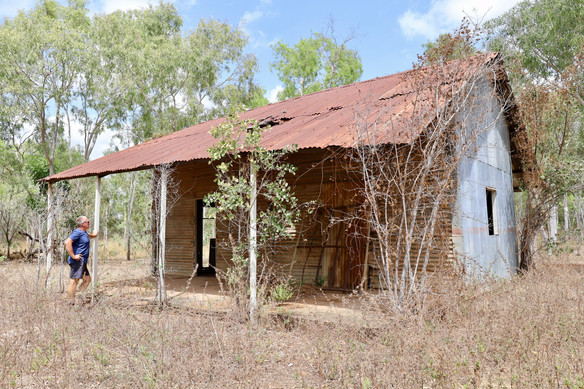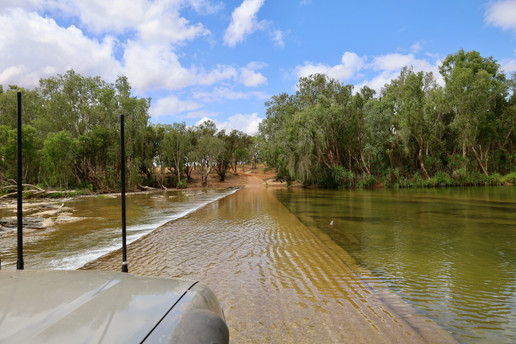LIMMEN NP ... Qld gulf country
- Woolgoolgaoffroad
- Dec 19, 2022
- 6 min read
It’s funny when you travel and generalise areas, like Cape York, The Gulf and others, that’s exactly how I thought with these northern areas, until finding pockets of NPs in these massive isolated areas. They are a hint of beauty in harsh remote areas.

One of these totally amazing areas is Limmen National Park which sits on the edge of the Gulf Country, between Roper Bar and Cape Crawford. Access is via a seasonal well-graded road, with side tracks to camping and fishing areas.

However, roads can be closed due to flooding from November until May when summer storms hit and create chaos across the top end.

LIMMEN NP
Limmen is a 10,000 square kilometre NP on the eastern side of the NT reaching all the way out in the waters of the gulf. It’s still managed by Parks NT and has its own ranger station but the best part are the number of cheap and bountiful free campgrounds in the area.

Now, this is bloody remote country and very isolated, so trip and car prep need to be spot on. So really, what’s the point of heading into this wilderness in the middle of nowhere ?

Well, for one Limmen is known for its remoteness, but also best known for its number of massive sandstone formations aptly known as the Lost Cities, but also to access the 1millon acre station- Lorella Springs Wilderness Park.

My journey started from the eastern fringe north of Cape Crawford, but before hitting this remote section of the Gulf, I made sure I was full of fuel and groceries from the nearby settlement of Borroloola. There are two turns to head to Limmen and my choice was Ryans Bend Road which departs off the Carpentaria Hiway 26km out of Borroloola and bisects Nathan River road, which is the main road that traverses through Limmen NP.

Right from the start, the road is pretty average and the sign states it's remote travel with no fuel for nearly 400km. For the first 100 or so kilometres, you’ll travel through and pass old cattle stations in this rough country. When I passed through the roads were rough with endless corrugations but that’s what is expected at the end of the dry season up here.

FAST FACT
Interesting fact - Abel Tasman named nearby Limmen Bight, Cape Maria and Arnhem Land in 1644, but it was explorer Willen Joosten that sailed into the Gulf of Carpentaria in 1606. Add another 200 years and in 1845 Ludwig Leichhardt followed and named the Limmen Bight River as he travelled upstream looking for a way west. Pastoralism did start in the area around 1883 but because of the poor soil, limited water and resistance from the Aboriginals, the cattle industry struggled but does better today with modern grazing practices.
The scenery heading deep into the park is nothing short of spectacular where the roads are a deep red colour and the trees are covered in the same dust from months of dry weather, with stunning ranges cutting the skyline as the road finds a path between mountains.
The complex geology of this area makes the drive extremely investing with remnants of the Arnhem Land Plateau running north-south through the park leaving an array of habitats from dry sandstone to vast woodlands, seasonal floodplains, billabongs and flowing rivers.
Limmen is a scattered NP with sections of the park broken in amongst nearby cattle stations, the main section of the park further to NW. One of the iconic places in the NT or in fact Australia is the wilderness park and massive cattle station of Lorella Springs.
LORELLA SPRINGS
It's a well-known fact throughout the 4wd world that Lorella is an iconic destination for many reasons. Great camping, a maze of 4wd tracks, dozens of swimming holes, beautiful hot springs, amazing Barra fishing in the many rivers plus you can head out to the waters of the Gulf of Carpentaria.

When arriving at Lorella, you’ll always receive the friendliest of welcomes from any of the staff members who will listen to your wish list for exploring the park. During check-in, they will give you a list of options on where to camp depending on your needs plus hand you a great map of the property featuring tracks, waterholes, things to see and do plus any other interesting spots that they think you’ll enjoy.

I found spending a few days there just not enough and a bit overwhelming with so many tracks, rock formations, water holes and lookouts to explore. The ancient rock formations and old river beds have to be seen to beloved where huge masses of conglomerate rock have formed together in sizeable boulders, natural archways and ruggered steep ranges that crisscross Lorella.
I really can’t recommend one favourite spot because around every corner and across every dry creek bed has a different outlook and feel. Lorella is actually 15 degrees south of the equator and is claimed to be in one of the most remote and isolated places in the country, allowing for 20km of unspoilt ocean frontage with a huge array of fauna and flora on the property, literally thousands of different species.

This place has had prehistoric dinosaur bones found on the property, there’s been gold and diamonds found too. It's an amazing place where no amount of words or pics can describe it. But they do close during the wet season around the end of September, so if you're visiting late, just expect the billabongs to be a tad low.
LEAVING LORELLA
Leaving Lorella back into Limmen my first port of call was into the stunning Southern Lost City. You're allowed to camp here for a small fee and it gives you a good base to spend the day on the walking tracks that loop around these huge and eerie sandstone pillars.

The walking tracks weave through giant sandstone pillars formed nearly 150 million years ago as part of an old seabed that cracked over time. We’re talking millions of years where both water and wind have been slowly weathering these columns into these incredible shapes. Most have different colours through them due to the complex mineral composition in the sandstone and ore, plus when the sun hits the formations from different angles the colours are simply amazing.

The next stop along from the Southern Lost City is Butterfly Falls. It’s a peaceful area to camp plus there’s a short stroll to the beautiful falls and pool. The falls are at a base of a low sandstone plateau with shear rock faces surrounding this magical area. It's a short stroll to the gorge and falls, this is home to the Wagiman people who lived in the surrounding area.

The water here flows into the Douglas River and eventually the Daly River about 50km away. One of the best vantage points to see across the gorge is along the 5km Lookout walk that’s suitable for people with medium fitness. Butterfly Gorge gets its name from the huge amount of Common Crow Butterflies that shelter in the vegetation taking advantage of the cool climate.

Heading out from Butterfly Gorge the next stop was the Rangers Station on Nathan River Station. Not only has the station a huge array of history and artefacts in its building, but they will also provide you with road conditions either way that you're heading plus give you the code for the gated entry for the Western Lost City Track.

Unfortunately, when I arrived the track was closed for maintenance but it's a 28 km track to another group of stunning sandstone rock columns. Reports at the time suggested the track was in poor condition ( hence the maintenance ) all the way in. It's a managed and very remote track so you need to sign in and out giving the rangers an indication of where people are at the time. Apparently, the track has a few rough creek crossings, there's highlighted pastoral history, waterholes and 3.5 billion-year-old Stromatolites, which are large rocks formed by algae and deposited on an ancient seabed.

My next port of call was the Roper Bar general store which carries a few supplies but more importantly fuel, still 200km away along Nathan River Road. From a 4wd perspective, it's not a challenging drive BUT the corrugations get pretty average after a few days on them.

Nathan River Road joins up to the Port Roper Road where if you can head out to the massive Roper River system, but by swinging left it's a short drive to the Munbililla ( or Tomato Island ) campground on the banks of the Roper River with great facilities.

A couple of nights here is ideal to catch up with other travellers and there’s phone signal too. It’s still another 50km out to the Roper Bar store for fuel and there’s the chance to drive the old Roper River crossing and to check out the ruins of the Roper River Police station that operated from 1885-1980.
There's heaps to read here with plenty of relics around to check out, plus there’s the memorial cairn commemorating the journey of Freidrich Leichhardt in 1845. From the store, it's an easy sealed 200km cruise out to the Stuart Highway and the town of Mataranka.

I wasn’t expecting so many beautiful areas along the 400km through Limmen NP but would definitely recommend this area to anyone who loves remote travel. It's a breathtaking area where you literally spend a month exploring a very special and unique area.
It's hard to believe that an area can be so harsh, yet has so many fragile elements.













































Have you updated your cruiser Kev or is your dream SWB? (pic next to Costello track sign)